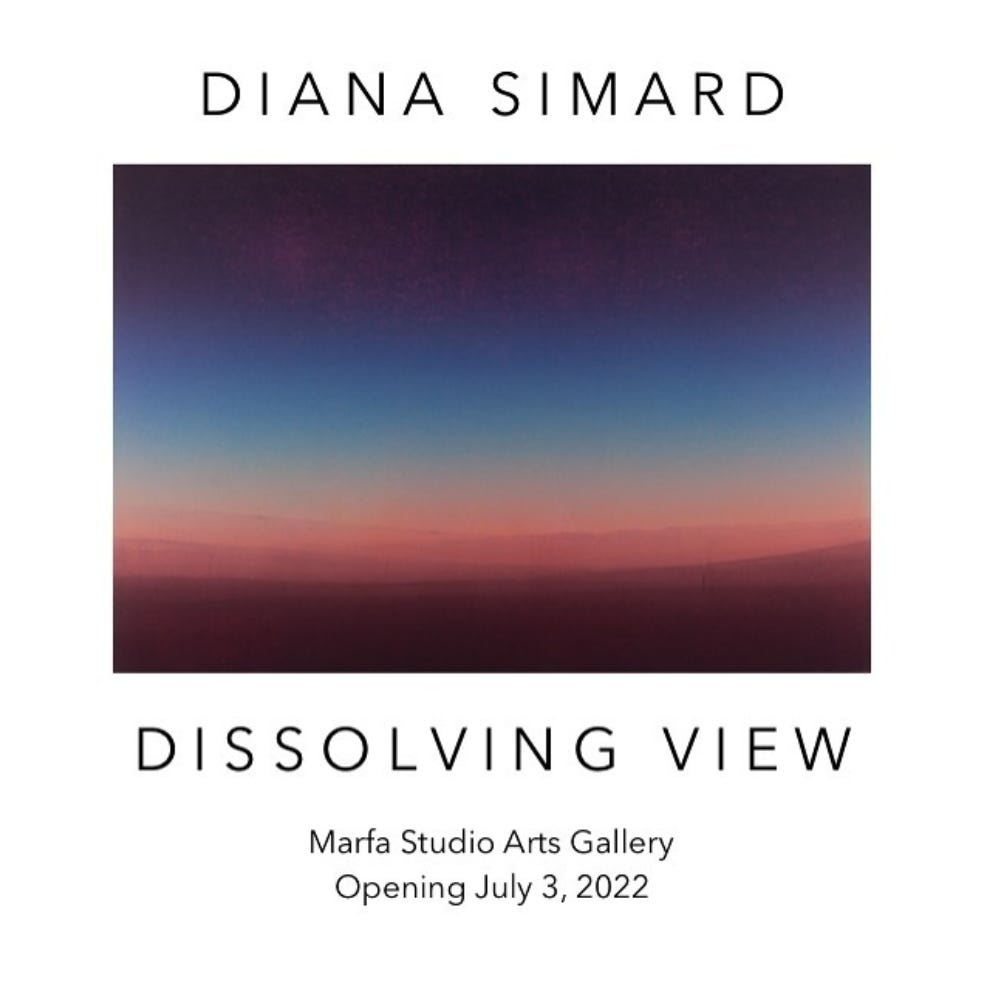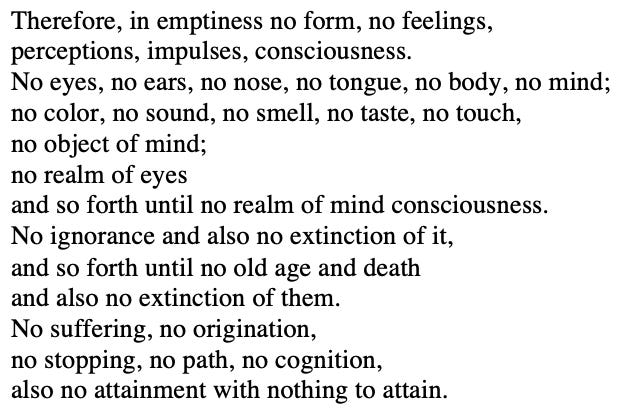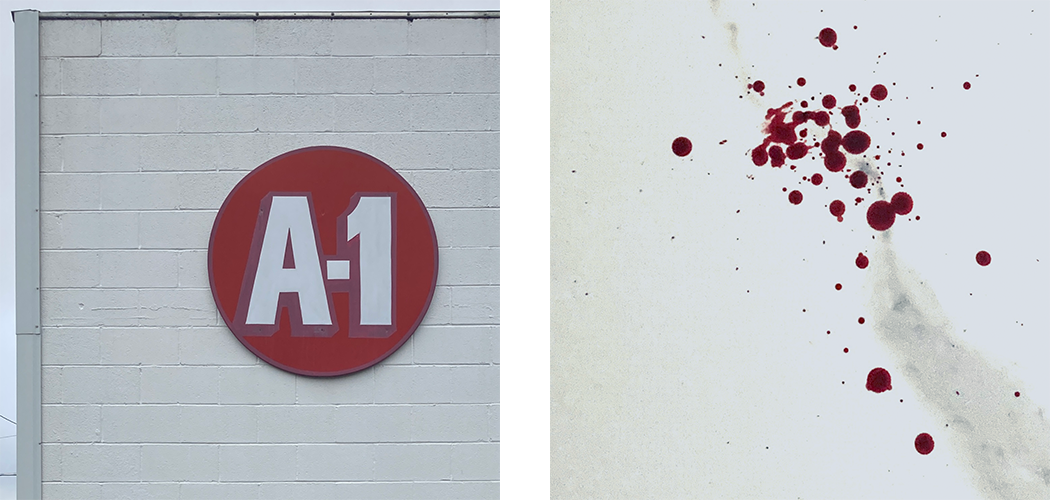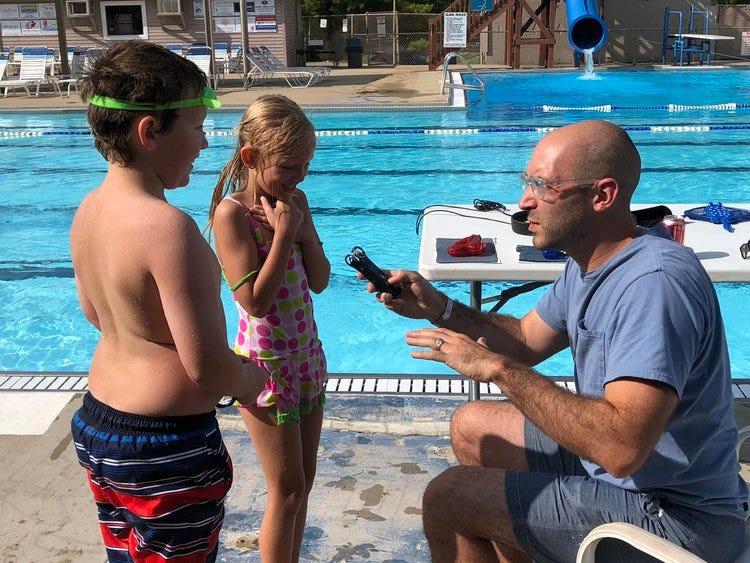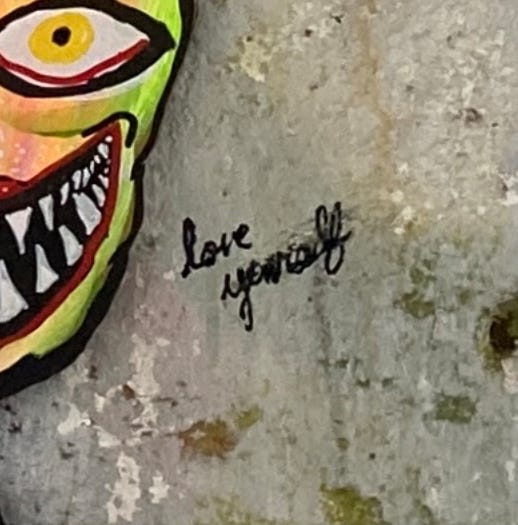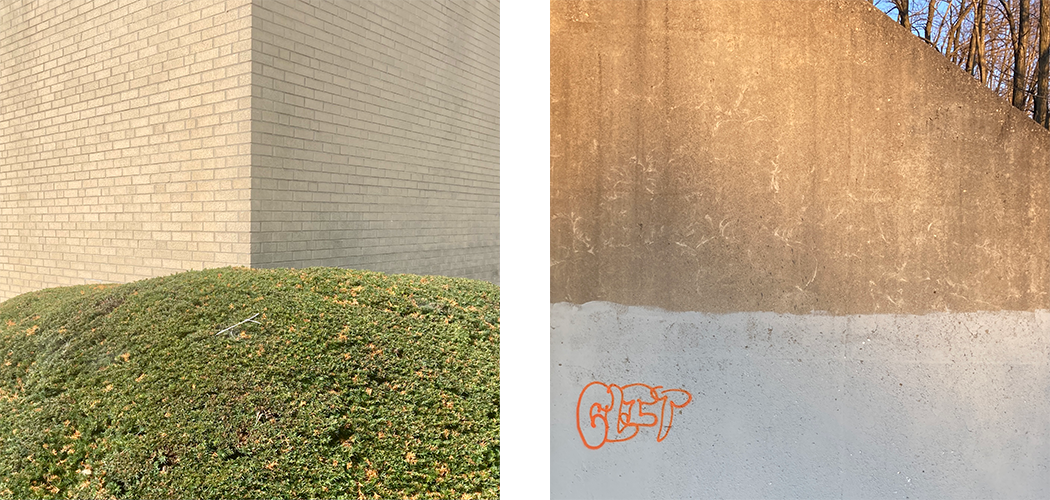
I read something recently about a friend who had moved to a new place. It was some kind of beautiful and quiet smaller town out West that they had come across, and they were being intentionally secretive about it outside of their inner circle of friends and family.
I also was reading something about a new kind of fish in the Amazon, and I noticed some unfamiliar language. The biology journal I was skimming described the fish as “newly described,” not “newly discovered.” It was a subtle, but significant change of language. The fish was aware that it existed. Surely the creatures that ate the fish, and the creatures or plants that the fish ate, knew that it existed. And at some point, a human had probably encountered the fish. Perhaps even field biologists had seen the fish and not remarked upon it.
There’s an implicit bias in describing something as “newly discovered.” This is probably why the academic language has changed. Naming something asserts power over it. As the spiritual thinker Adyashanti writes, as soon as you know your name, imposter syndrome begins. Binary thinking begins. Your name is one of the first ways you learn to distinguish yourself as separate from the universe of which you are now, and have always been, a part.
“Newly described” is more specific. The place that my old friend was describing in purposely vague geographic terms was the second or third super beautiful and idyllic place that they had lived. Each place after the other had become too expensive or crowded or whatever terrible thing happens to delicate ecosystems when they’re broadcast in such a way as to invite a stampede of invasive species. I got to know both sides of this experience when I moved to Marfa, Texas, one of the most expensive real estate markets in Texas located in one of the most impoverished counties in the United States.
In an effort to protect this new, quiet, but still remarkably beautiful place, my friend was posting – always be posting! – without identifying their location.
That seemed fine and well-intentioned. But then I was thinking of how I live in Muncie, Indiana. I was describing a January “medicine journey” to a friend in California one morning on the phone, making small talk about these over-winter reveries. At one point my bud said “oh I thought you were out in a field somewhere running around” and I said “actually the East Central Indiana Rust Belt in early January isn’t quite as idyllic as it sounds.”
Muncie is a wonderful place to live, but it’s also challenging. I’ve had several of these conversations about my experience here where far-flung friends have taken my enthusiasm for evangelism. And I have to caution that Muncie is a different experience if you aren’t moving here to hole-up with a partner with whom you are fascinated by and enamored with in equal measure.
It’s easy to try and document life in a beautiful place out in the country. When I lived in the high desert of Far West Texas, every window of my house looked like a Diana Simard painting. Only a few people are as good as Diana at creating work like Earth’s Shadow Rising (2019), a painting that points so directly at the awesome, fleeting fragility of daily events. At the moment, I cannot think1 of any of their names.
It’s more complicated trying to document the beauty of a place like Muncie. During my 20 years in California and Texas I swore I’d never come back to my home state of Indiana. Sometimes adding that Muncie, specifically, was “the last place in North America where I would live.” Munseetown is not our forever home – language that conjures a funereal claustrophobia for me, regardless of well-intentioned pet adoption marketing efforts. But after four years it remains one of the happiest and healthiest places I’ve inhabited. And my former mailing addresses included such photogenic locales and prohibitively expensive locales as Bloomington, Indiana; Canterbury, England; Los Angeles; the Santa Cruz Mountains; and the high country of the Big Bend.
I’m careful about geo-tagging my photos for other reasons: There is a deeply embedded classist and racist disregard for Muncie. Posting Muncie photos on social media invites derision from former Ball State University students that I have no tolerance for, even if I'm posting pictures of the inflatable sex doll that somebody nailed to the porch of an abandoned house down the street.
I’m only more aware of this now since Wife Rachel is a Muncie native, who coincidentally returned to Indiana from Chicago shortly after my Texas exodus2. When people who don't know this complain about Section 8 housing or talk shit about the south side, they aren't our friends.

Not long ago I read a 2020 profile of our town that focused on The Joy of Painting’s Bob Ross, whose legendary public television program was filmed in a Muncie studio that is now preserved as part of The Bob Ross Experience3. An acquaintance of ours – who has since departed Delaware County, along with a half dozen other friends – likened the art scene here to “a gallery in Soho in the 1980s." Which is very aspirational, and very different4 from our experience. The art scene here is good –see the Muncie Arts and Culture Council or the extraordinary PlySpace Residency Program for better perspectives. But what’s good about Muncie – for me anyway – is that it’s nothing like those other places. It embodies some of my favorite anti-aspirational Zen teachings: the Heart Sutra line “no attainment with nothing to attain,” and Joko Beck’s “I can rest in life as it is.”
There is beauty and transcendence here that is both ubiquitous and elusive. It’s the same sense of transcendence in the mundane that I seek to portray in my visual art, that I sometimes experience with the aid of plant medicines, and that I become aware of breathing in, and out, during zazen.
Here are some photos from the last year of walking quietly around our town.
These photos are from Tuhey Park. There was a brief scandal last year when this public greenspace was possibly going to be ceded by the city to the YMCA for a member's-only facility and parking lot. The project was halted by organized public outcry. I go there on some Saturday mornings to read and walk its circular pathway. I don’t know what’s inside the pictured building, which has always been locked as far as I can tell. There’s a large public pool5 nearby. The park is often quiet in the mornings except for friendly unhoused people seeking shade, but the sounds of the pool carry over.
The White River Greenway near Elm Street Bridge, and a pathway through shrubbery from Tuhey Park to White River Boulevard.
These two houses no longer exist.
Rear views of two houses near downtown. One of these houses is inhabited, the other is not, as far as I can tell.
I don’t know what’s on the other side of the brick wall portal, but there’s a church inside this former drive-up bank branch. The church appears at first glance to be as derelict as the bank, but the plants in the drive-up window tell another story.
Lines only remain straight for so long.
The first image is of Rachel as featured in a film by Adam Stacey and Makenzie Goodman, part of their immersive installation “focused on the past, present and future of the White River that runs through Muncie.” The installation was part of their PlySpace residency. Much of my own work uses the White River for subject matter, and their thoughtful and emotional exhibition produced the precious sense of invigoration that arises when inspiration and admiration are combined with deep envy. Against all odds, not only are these two artists based in Valentine, Texas – the next town over from Marfa6 – but they have since returned for an extended stay in Muncie. It is hard to explain how much I enjoy having other people to talk Texas gossip with. However it is of some concern that I am no longer the only person on scene representing various Marfa and Far West Texas entities on my hats. The second photo is of the White River at sunset, taken from a bench that I sit on when I am out for a walk but want to rest, especially if I am talking on the phone.
The Craddock Wetland Nature Preserve in winter, at dusk and mid-morning.
The last snow of the season fell on Rachel’s April birthday so we took our winter gear for one last walk. The second image is from a portion of the White River Greenway that often remains unmowed in summer, possibly in a gesture toward sustaining the riparian zone as a wildlife corridor.
There is a lot of very bad yet very entertaining graffiti in Muncie, much of it involving crude renditions of genitalia juxatposed with bongs, flying saucers, slogans expressing solidarity with Black Lives Matter, and protests against police violence. It often gets covered up quickly, unlike the n-bomb racial slur that has remained untouched on the White River Greenway underneath the Walnut Street bridge for over a year now. The horned cutie on the left here is long gone as well7. Thankfully the corn guy on the right remains unmolested. I like that guy. He seems nice.
The red A-1 sign is on the wall an automotive repair shop across the alley from a funeral home, right next to their hearse garage. I don’t know if the shop is any good but they were nice to me on the phone when I asked if they could patch a tire once8. The color scheme was a good complement to the image of my blood spattered on our kitchen floor. I’m a Type-1 diabetic with an insulin pump, which is great: It’s a little machine controlled by an old-school GPS-looking PDA that slowly drips insulin into my system via a subcutaneous catheter. Sometimes the catheter hits a vein though, and when I switch the unit – a usually unremarkable procedure that happens every 2-3 days – I walk around the house dribbling blood everywhere. It’s easily staunched with alcohol wipes, so nothing to worry about.
You can find our the 2021 Muncie Appreciation Photo Digest, “A Pleasant Mellowness,” here:
You can help make Void Contemplation Tactics an emotionally rewarding and/or slightly less unprofitable project by sharing this post, subscribing for free, subscribing for money, and/or purchasing music from the artists we play on the Inter-Dimensional Music airwaves. Breathe deep in the Bandcamp library.
After I thought about it for awhile all I could come up with is Agnes Pelton. Trve desert transcendentalists capable of communicating their experience with such unassuming elegance were rarely encountered in my two decades of arid land living.
Also known as Texit. My friends in Baby Steps the band even wrote a song about it! They’re finishing up their first album now and I am very excited to hear it because I love them all very much.
Bob Ross seems like a sincerely beautiful person but the story of his success is very sad, and likely not part of the exhibition. It’s easier to understand that money, power, and fame will not bring you happiness, than it is to pass on opportunities to acquire money, power, and fame. Bob’s story is an important and heartbreaking cautionary tale.
Although I suppose it depends on which Soho gallery. Also in the ‘80s I was living on a gravel road surrounded by corn and soybean fields in Boone County so what do I know lol.
PlySpace 2018 Resident Anthony Bowers created a wonderful exhibition about the public pool during his stay. Find his short film and more on the PlySpace website.
Valentine is also the home of Elmgreen & Dragset’s world-famous Prada Marfa installation. As the former communications director for one of the arts organizations that commissioned the work, I am well acquainted with explaining that while the installation carries the Marfa name, that no, you cannot walk the 30 miles between our exhibition space and the installation. Also please do not stand in the road to take the picture that everyone takes as traffic often moves along highway 90 at speeds exceeding the posted 75mph. We don’t want any of our guests getting pancaked by drunk dump truck drivers.
They do not patch tires but they sent me in the right direction. Thanks guys!






